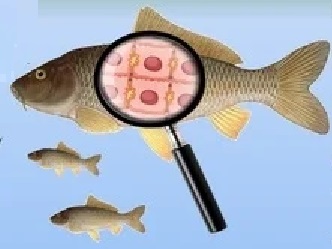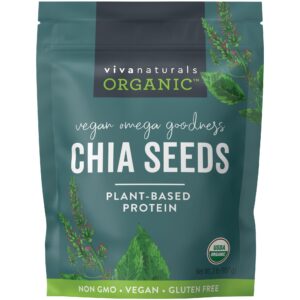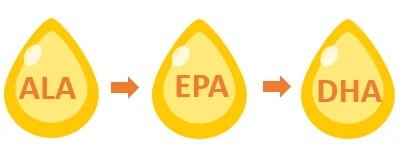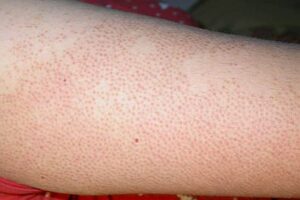
CHART of body's EFA conversions to eicosanoids: PROSTAGLANDINS, LEUKOTRIENES and THROMBOXANES

Balanced presence of eicosanoids determines how cells react to local trauma
The eicosanoids are produced by omega-6 DGLA and AA, and omega-3 EPA present in cell membranes. Eicosanoids derived from omega-6 AA mostly have inflammatory “call-to-action” effects, such as increasing pain, causing blood to clot, raising body temperature, and constricting vessels, and eicosanoids from omega-6 DGLA and omega-3 EPA and DHA have anti-inflammatory, “back-to-normal” effects. Excessive or unresolved inflammation can lead to uncontrolled tissue damage and health problems.
Understand how “First Response” eicosanoids are VITAL FOR HEALTH
Δ6D and Δ5D enzymes Inhibited by: dietary imbalance of Omega-6 to Omega-3, altered/damaged fats, cholesterol, excessive long-chain SFAs (in meat and dairy), age>30, sugar, stress, drugs, alcohol, toxic chemicals, caffeine, High INSULIN, excessive palmitoleic acids (Eg in coconut oil), lack of required conversion minerals/vitamins (see chart)
| OMEGA-6 FAMILY | OMEGA-3 FAMILY | ||||
| LA (Linolenic Acid) 18:2w6 In Soybean oil, Nut and seed oils (Safflower, Sesame, Cottonseed, Sunflower, Corn, Hemp, Canola, peanut), animal fats (especially grain-fed), walnuts, almonds, legumes, wheatgerm oil, wild salmon | ALA (α-Linolenic Acid) 18:3w3) In Seed Oils (Flax, Chia, Hemp, Canola), Walnuts, Green leafy vegetables, Grass-fed animal fats | ||||
| Pathway Competing for: Δ 6D enzyme Requires B6, Magnesium, Zinc | |||||
| ⇓ | ⇓ | ||||
| GLA (Gamma-linolenic Acid) 18:3w6 In Blackcurrant, Borage & Evening primrose oils | SDA (Stearidonic Acid) 18:4w3 In Blackcurrant & other wild seed oils | ||||
| Elongase 5 Enzyme ⇓ | Elongase 5 Enzyme ⇓ | ||||
| DGLA (Dihomo-γ-linolenic Acid) 20:3w6 In Breast Milk. Most potent anti-inflammatory EFA | Eicosatetraenoic Acid | ||||
| Anti-inflammatory pathway ↙ ↙ COX-1 or COX-2 | Pathway Competing for: Δ 5D enzyme (Requires Vitamin C, B3, Zinc) | ||||
| Blocked by EPA [Reference] ⇓ | Preferred pathway. ⇓ | ||||
| Blocks LT4 ↓ ↓ | AA (Arachidonic Acid) 20:4w6 (abundant in body’s immune cells, skeletal muscle, brain, liver, spleen, retina) In Meat, Farmed salmon, Eggs (not much) Most potent inflammatory EFA | EPA (Eicosapentaenoic Acid) 20:5w3 (and DHA) In: Fish oil, grass-fed animal and poultry, land animals’brains, testes, adrenals, eyeballs. Brown/red algae | |||
| Pathway Competing for: COX-1 or COX-2 | Pathway Competing for: COX-1 or COX-2 | Pathway Competing for: LOX Enzymes | Pathway Competing for: COX-1 or COX-2 | Pathway Competing for: LOX Enzymes | ⇓ Elongase DPA (Docosapentaenoic Acid) |
| ↓ ↓ | ↓ ↓ PGG2 ↓↓ | ↓ | ↓ | ↓ | ⇕Δ4D |
| PGH1 ↓ | PGH2 ↓ Isomerases & Tissue specific synthases | (DGLA derivative: 15- hydroxyl blocks LT-4 Belch, 2000) | PGH3 ↓ | DHA (Docosa-hexanoic acid 22:6w3) For brain and nerves (10-20% of brain’s membrane phospholipid fats) | |
PG1Prostaglandins TX1Thromboxanes | PG2Prostaglandins | LT4Leukotrienes EX4Eoxins LX4Lipoxins | PG3Prostaglandins TX3Thromboxanes | LT5Leukotrienes RVsResolvins PDsProtectins | RVsResolvins PDsProtectins |
PG2Prostaglandins TX2Thromboxanes | |||||
Color coding:
Enzymes:
COX 1 (Cycloygenase enzyme 1; COX-2 (Cycloygenase enzyme 2)
LOX (Lipoxygenase enzyme)
Eicosanoids:
Eicosonoids are coded according to their usual type of activity. They are not necessarily differentiated as good and bad.
“Orange” represents activity altering the status quo, some increasing inflammation.
“Turqoise” represents more of a “calming down” / going-back-to-normal action and/or resolving the inflammation.
“Red” represents eicosanoids having an inflammatory effect
“First Response” eicosanoids are VITAL FOR HEALTH
References
Belch JJ, Hill A (Jan 2000). “Evening primrose oil and borage oil in rheumatologic conditions”. Am. J. Clin. Nutr. 71 (1 Suppl): 352S-6S. PubMed.





















